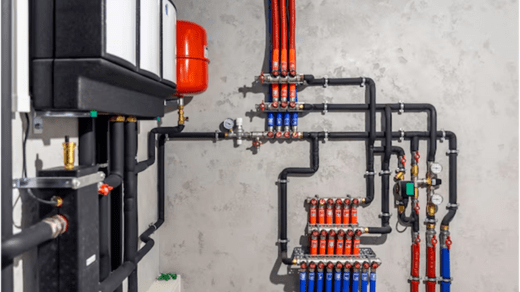If you’re wondering about the location of the Electronic Stability Program (ESP) sensor in your vehicle, you’re not alone. The ESP sensor plays a crucial role in monitoring the stability of your car and assisting in maintaining control during sudden maneuvers or slippery road conditions. Let’s explore where you can typically find the ESP sensor in a vehicle.
1. Understanding the ESP System
Before diving into the location of the ESP sensor, it’s essential to have a basic understanding of how the ESP system works. The ESP system helps to prevent skidding and loss of control by selectively applying brakes to individual wheels and reducing engine power when necessary.
2. Integration with ABS System
In most vehicles, the ESP sensor is integrated with the Anti-lock Braking System (ABS). This integration allows the ESP system to utilize wheel speed sensors to detect any discrepancies in wheel speeds, which could indicate loss of traction or instability.
3. Front Wheel Sensors
One common location for the ESP sensor is near the front wheels of the vehicle. Typically, there will be a sensor located near each front wheel hub or brake assembly.
4. Rear Wheel Sensors
In addition to front wheel sensors, some vehicles may also have ESP sensors located near the rear wheels. These sensors work in conjunction with the front sensors to provide comprehensive stability control.
5. Wheel Hubs
The ESP sensor is often mounted on or near the wheel hubs. This placement allows the sensor to detect wheel speed accurately, which is crucial for the ESP system to function effectively.
6. Brake Assemblies
Another common location for the ESP sensor is within the brake assemblies. Placing the sensor in this location allows it to monitor wheel speed directly and react quickly to any changes in traction or stability.
7. Wiring Harness
The ESP sensor is typically connected to the vehicle’s electrical system through a wiring harness. This wiring harness routes signals from the sensor to the vehicle’s onboard computer, which then activates the ESP system as needed.
8. Undercarriage
In some vehicles, especially those with all-wheel drive or four-wheel drive systems, the ESP sensor may be located on the undercarriage of the vehicle. This placement ensures optimal coverage and monitoring of all four wheels.
9. Near the Steering Column
In certain vehicle models, particularly those with advanced stability control systems, the ESP sensor may be located near the steering column. This placement allows the sensor to detect any steering inputs and adjust stability control accordingly.
10. Engine Compartment
While less common, some vehicles may have the ESP sensor located within the engine compartment. This placement may be necessary for certain sensor types or for vehicles with limited space elsewhere.
11. Diagnostic Port
In addition to physical locations on the vehicle, the ESP sensor data can also be accessed through the vehicle’s diagnostic port. Mechanics and technicians use diagnostic tools to retrieve sensor data for troubleshooting and maintenance purposes.
12. Calibration Requirements
It’s essential to note that the ESP sensor may require calibration or alignment after certain maintenance procedures, such as wheel alignment or replacement of suspension components. Proper calibration ensures accurate sensor readings and optimal performance of the ESP system.
13. Manufacturer Recommendations
For specific information about the location of the ESP sensor in your vehicle, it’s best to consult the owner’s manual or contact the vehicle manufacturer directly. They can provide detailed information tailored to your vehicle’s make and model.
14. Importance of Proper Maintenance
Maintaining the integrity and functionality of the ESP sensor is crucial for ensuring the safety and stability of your vehicle. Regular maintenance checks and prompt repairs can help prevent issues and maximize the lifespan of the ESP system.
15. Signs of ESP Sensor Issues
If you experience any unusual behavior while driving, such as the ESP warning light illuminating on the dashboard or stability control malfunctions, it could indicate a problem with the ESP sensor or system. In such cases, it’s essential to have the vehicle inspected by a qualified mechanic.
16. DIY Inspection Tips
If you’re comfortable with basic automotive maintenance, you can visually inspect the areas around the wheel hubs and brake assemblies for any signs of damage or corrosion that may affect the ESP sensor’s performance.
17. Professional Inspection and Repair
For more complex issues or if you’re unsure about the condition of the ESP sensor, it’s best to seek professional inspection and repair services. Certified technicians have the expertise and specialized tools necessary to diagnose and address ESP sensor issues effectively.
18. Compatibility with Aftermarket Parts
When replacing or upgrading components related to the ESP system, such as wheel speed sensors, it’s essential to ensure compatibility with your vehicle’s make and model. Using aftermarket parts that are not designed for your vehicle can compromise safety and performance.
19. Consultation with Experts
If you’re considering modifications or enhancements to your vehicle’s stability control system, it’s advisable to consult with automotive experts or professionals familiar with ESP systems. They can provide guidance on suitable upgrades and installation procedures.
20. Regulatory Compliance
Modifying or tampering with the ESP sensor or stability control system may impact the vehicle’s compliance with safety regulations and standards. It’s crucial to verify that any modifications adhere to applicable laws and regulations in your region.
21. Ongoing Monitoring and Maintenance
Even after addressing any ESP sensor issues, it’s essential to monitor the system regularly and perform routine maintenance as recommended by the manufacturer. This proactive approach can help prevent future problems and ensure continued safety and performance.
22. Driver Awareness and Training
In addition to maintaining the ESP system, developing good driving habits and staying aware of road conditions are essential for safe and confident driving. Proper training and education on vehicle dynamics and stability control can also enhance driver proficiency.
23. Manufacturer Support and Resources
Vehicle manufacturers often provide support resources, such as online guides, instructional videos, and customer service assistance, to help owners understand and maintain their vehicle’s stability control systems effectively.
24. Community Engagement and Support
Engaging with automotive enthusiast communities and forums can also be valuable for sharing experiences, troubleshooting issues, and accessing helpful tips and advice related to ESP sensors and stability control systems.
25. Conclusion
In conclusion, the ESP sensor plays a critical role in maintaining the stability and control of a vehicle, especially during challenging driving conditions. By understanding its function and typical locations, drivers can ensure proper maintenance and address any issues promptly, contributing to safer and more enjoyable journeys on the road.







